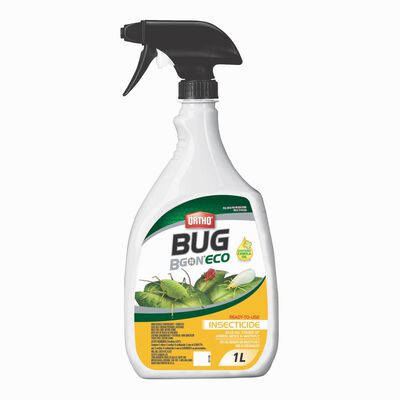
Common Indoor Garden Insects and How to Get Rid of Them
Other creatures—tiny ones with multiple legs and beady eyes—love houseplants, too. Indoor garden insects bite into the plant’s leaves and stem and drink up its sap, leaving behind dreary leaves and stunting its growth. But there’s no need to worry. We’ve been studying garden pests for many years, and we’ll share our time-tested tips for getting rid of common indoor plant insects.
- Aphids: Aphids may be the most common houseplant pest. Although they can be black, brown, yellow, or grey, these insects are typically green with soft, pear-shaped bodies. You’ll usually find them—lots of them—on the underside of plant leaves. If you catch an aphid infestation early, you can remove them by hand. Otherwise, spray the plant with an insecticidal soap, such as Ortho® Bug B Gon® ECO Insecticide.
- Mealybugs: Mealybugs are small insects with soft, oval-shaped bodies that have a wax coating, giving them a fuzzy white or grey appearance. Like aphids, they hide underneath plant leaves. To control a mealybug problem, spray the stem and both sides of the leaves with a fine mist of Ortho® Bug B Gon® ECO Insecticide or use neem oil.
- Spider mites: These eight-legged arachnids suck the fluids from indoor plants, leaving light-coloured speckles, dull leaves, and sometimes a fine silk webbing in their wake. Physically remove spider mites by spraying the plant down with water in the shower or outdoors using a garden hose. After the plant dries, an application of insecticidal soap should kill off any remaining spider mites.
- Fungus gnats: These flying grey or black insects may be the peskiest pests to control because each female can lay hundreds of eggs. Fungus gnats prefer to live in soil with compost or bark, so switch to a potting mix that doesn’t contain either, such as Miracle-Gro® Indoor Potting Mix. Next, spray the infested plant with an insecticide and consider adding yellow sticky traps to trap and kill the fungus gnats.
Indoor garden insects can travel with the plant from the garden center, or they can find their own way into your home when the temperatures start to dip. By keeping a watchful eye out for these troublesome creatures, you can protect your houseplants from harm and continue to reap the many rewards of growing plants indoors.
